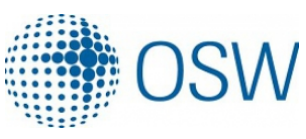Analysis: Gas Supplies to Lithuania Begin to be Diversified
On 21 August, Lithuania’s LitGas signed a contract with Norway’s Statoil envisaging supplies of liquefied natural gas via the Lithuanian LNG terminal in Klaipeda. Norwegian natural gas is expected to reach Lithuania by December this year to initiate the operation of a new terminal, beginning on 1 January 2015. Statoil will supply at least 540 million m3 of gas (950,000 m3 of LNG) to Klaipeda annually over the first five years. LitGas has claimed that it has also reached an agreement with twelve other global suppliers of LNG; this will enable it to trade in natural gas on spot markets and also on the Lithuanian market. Lithuania uses 3 billion m3 of gas annually, all of which was bought from Gazprom until recently. Russia is also the sole supplier of gas to Latvia (annual consumption of 1.7 billion m3) and to Estonia (700 million m3). The terminal will make it possible to import between 2 and 3 billion m3 annually.
Commentary
- The contract with Statoil will be the first time an alternative to gas supplies from Gazprom has been made possible. Gazprom will, however, remain the main supplier to Lithuania. Statoil will gain a new market in the Baltic states. The emergence of a second source of gas supplies should be viewed as a success for the Lithuanian policy of improving its energy security following the end of Gazprom’s control of the country’s gas grid. Signing a new long-term contract with Gazprom that will regulate co-operation after 2015 will be another challenge. Now that the situation has changed on its gas market, Lithuania expects that market mechanisms will begin to operate there and thus help it negotiate more favourable terms of the new contract with Gazprom.
- The Norwegian gas price will be linked to the NBP, the British natural gas exchange index. For Lithuania this is a new mechanism for setting the gas price – it is constantly changing since it depends on supply, demand and changes in weather conditions. The present price of Norwegian gas seems good. No precise values have been revealed. However, it can be estimated based on data for the last four months that the price of Norwegian LNG is around US$400 per 1,000 m3. At the beginning of 2014, Lithuania paid around US$450–460 per 1,000 m3 of Russian gas. Following negotiations, the price was reduced in May this year until the end of 2015 to around US$370.
- The contract with Statoil will for the time being allow the terminal to operate at minimum capacity. However, Lithuania expects to attract commercial clients from the Baltic region and from Poland. To expand the group of clients, it plans to build a station to enable natural gas to be loaded to truck and railway cisterns next to the terminal. Co-operation with Polish clients will be impossible without this. The Polish-Lithuanian gas interconnector will also create new opportunities. On 21 August, the Polish and Lithuanian operators of gas transmission systems, Gaz-System and AB Amber Grid, submitted joint applications to the EU’s Innovation and Networks Executive Agency for the use of the financial instrument called Connecting Europe Facility (CEF) to co-finance the design and construction of a gas pipeline. However, the implementation of this project is not scheduled until 2023.
Joanna Hyndle-Hussein is a Senior Fellow, Department for Germany and Northern Europe at The Centre for Eastern Studies.



